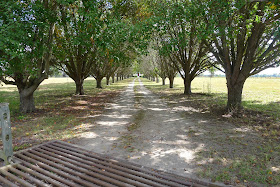Southern
uneasiness regarding slavery agitation had its origins in the murderous
Haitian and Santo Domingo slave revolts, and Northern abolitionist
encouragement of slave insurrection in the South, culminating in the Nat
Turner and John Brown affairs. One wonders today why the abolitionists
never advanced a peaceful and practical solution to African slavery.
Bernhard Thuersam, Chairman
North Carolina War Between the States Sesquicentennial Commission
"Unsurpassed Valor, Courage and Devotion to Liberty"
"The Official Website of the North Carolina WBTS Sesquicentennial"
Slaves and the South
“Abolitionist
assertions that the bondsmen were frequently inadequately clothed,
underfed and driven to death are economically unreasonable. Masters
wished to preserve the health and life of their slaves because a sick
Negro was a liability and a dead Negro was worth nothing. A rude plenty
prevailed on the average plantation.
“The
best preventative of theft is plenty of pork,” was the advice of a
Virginian. Kindliness and patience, frequently extended even to a
tolerance of slackness in every concern not vital to routine, created a
degree of contentment among the slaves to keep them docile. Although
Jefferson had declared “the whole commerce between master and slave is a
perpetual exercise of the most boisterous passions,” Harriet Martineau
sympathized with the masters.
She
wrote: “Nothing struck me more than the patience of the slave-owners . .
. with their slaves.” Travelers often wondered who were the actual
victims of the slave system.
Despite
abolitionist allegations to the contrary, flights and revolts were
infrequent. Fear that they should become general led the South to
introduce ruthless laws for the apprehension of the absconders and
federal legislation to protect their institution.
Actually,
however, the thousands of slaves who ran away formed but a slight
portion comprising the total slave population. During the several
decades of its existence only some 75,000 Negroes used the underground
railroad, which was organized to aid them in their attempt to reach
Canada.
Flights
were prompted by various causes. Some slaves undoubtedly ran away
because they were talented or sensitive mulattoes who desired freedom.
Others wished to escape from barbarous punishments peculiar to the slave
system. Many fled . . . not to escape slavery but to return to their
families and former homes. Some strayed for reasons not associated with
slavery; they became tramps or vagabonds or fugitives from deserved
punishments and crimes. Most slaves, unlike migratory free Negroes of a
later generation, did not move from their original homes.”
(The South Old and New, A History, 1820-1947, Francis Butler Simkins, Alfred A. Knopf, 1947, pp. 46-47)









.jpg)




